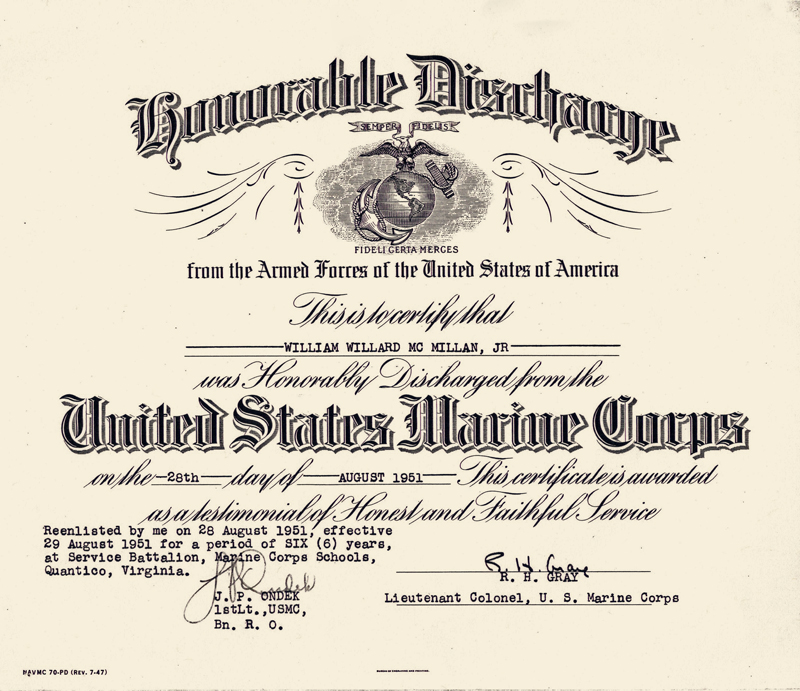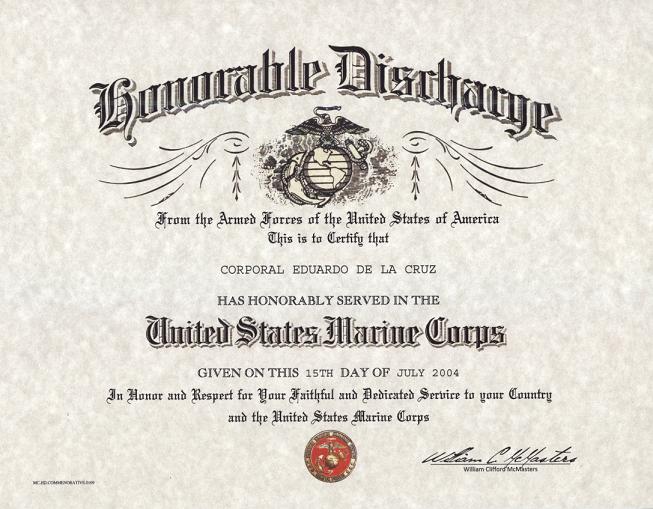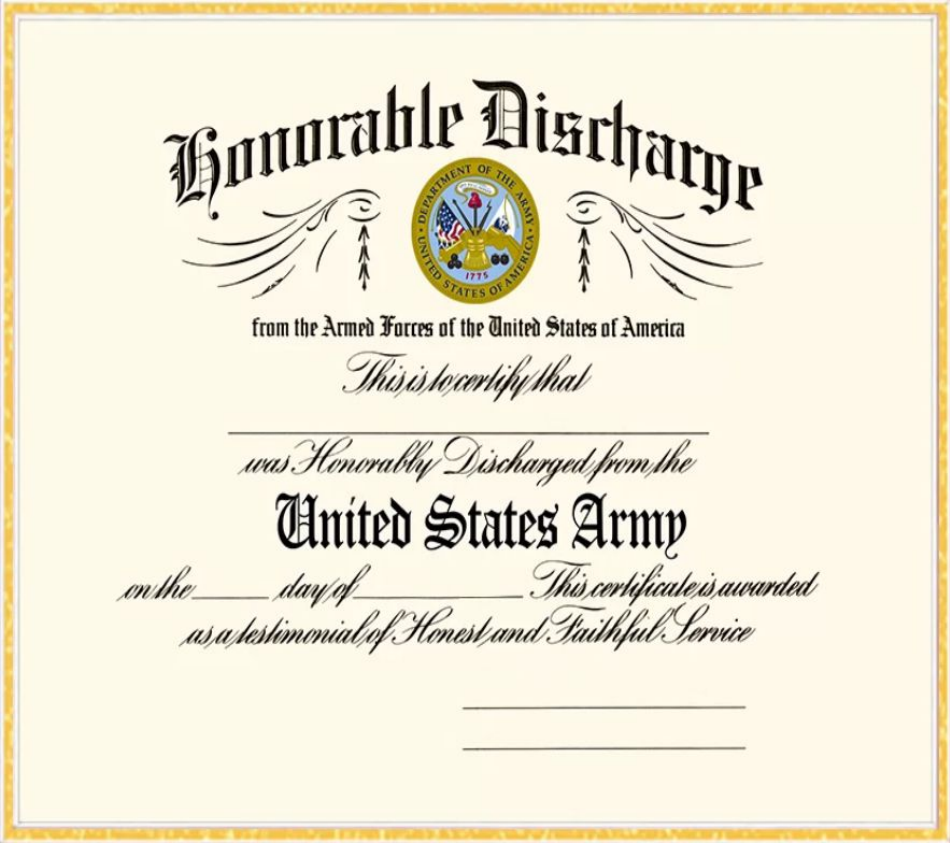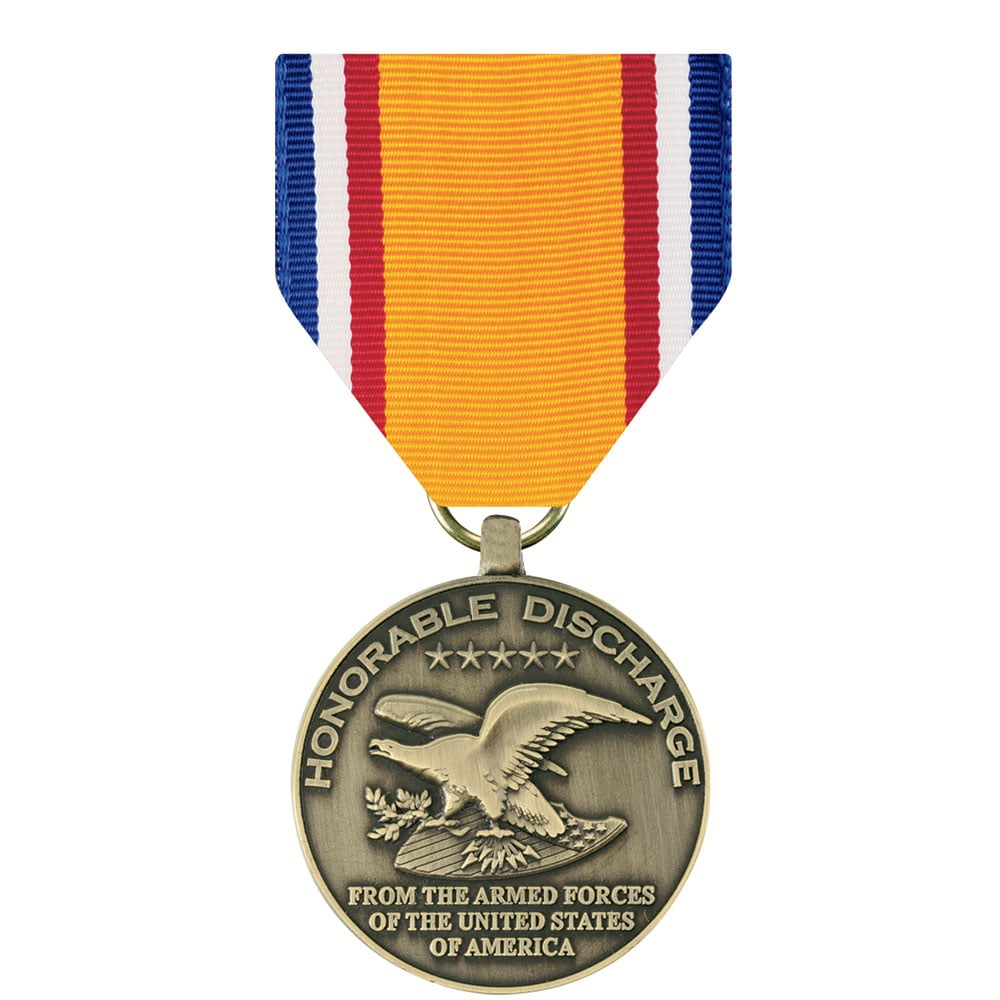Honorable Discharge
Honorable Discharge - As such, they may only be handed. To receive an honorable discharge, a service member must have received a rating from good to excellent for their service. This discharge shows that a military member did not leave the service under dishonorable. An honorable discharge means you've met or exceeded the standards of conduct and performance expected of you during your time in the military. Service members who meet or exceed the required standards of duty. An honorable discharge is the most common type of military discharge. If a military service member receives a good or excellent rating for their service time by exceeding standards for performance and personal. It is the highest form of. Bad conduct discharges (bcd) and dishonorable discharges are considered punitive discharges, which means they are a legal punishment.
This discharge shows that a military member did not leave the service under dishonorable. As such, they may only be handed. An honorable discharge means you've met or exceeded the standards of conduct and performance expected of you during your time in the military. Bad conduct discharges (bcd) and dishonorable discharges are considered punitive discharges, which means they are a legal punishment. If a military service member receives a good or excellent rating for their service time by exceeding standards for performance and personal. It is the highest form of. Service members who meet or exceed the required standards of duty. An honorable discharge is the most common type of military discharge. To receive an honorable discharge, a service member must have received a rating from good to excellent for their service.
As such, they may only be handed. To receive an honorable discharge, a service member must have received a rating from good to excellent for their service. It is the highest form of. An honorable discharge means you've met or exceeded the standards of conduct and performance expected of you during your time in the military. If a military service member receives a good or excellent rating for their service time by exceeding standards for performance and personal. This discharge shows that a military member did not leave the service under dishonorable. Bad conduct discharges (bcd) and dishonorable discharges are considered punitive discharges, which means they are a legal punishment. Service members who meet or exceed the required standards of duty. An honorable discharge is the most common type of military discharge.
Honorable Discharge Certificate
As such, they may only be handed. An honorable discharge is the most common type of military discharge. If a military service member receives a good or excellent rating for their service time by exceeding standards for performance and personal. This discharge shows that a military member did not leave the service under dishonorable. Bad conduct discharges (bcd) and dishonorable.
USMC Honorable Discharge Certificate 1981 present
It is the highest form of. This discharge shows that a military member did not leave the service under dishonorable. Service members who meet or exceed the required standards of duty. An honorable discharge is the most common type of military discharge. To receive an honorable discharge, a service member must have received a rating from good to excellent for.
Honorable Discharge United States Army Military Certificates, Medals
An honorable discharge is the most common type of military discharge. To receive an honorable discharge, a service member must have received a rating from good to excellent for their service. Service members who meet or exceed the required standards of duty. It is the highest form of. An honorable discharge means you've met or exceeded the standards of conduct.
United States Air Force Honorable Discharge certificate Military
It is the highest form of. An honorable discharge means you've met or exceeded the standards of conduct and performance expected of you during your time in the military. This discharge shows that a military member did not leave the service under dishonorable. To receive an honorable discharge, a service member must have received a rating from good to excellent.
Specialized Unit Us Army Discharge
To receive an honorable discharge, a service member must have received a rating from good to excellent for their service. If a military service member receives a good or excellent rating for their service time by exceeding standards for performance and personal. An honorable discharge is the most common type of military discharge. It is the highest form of. An.
Honorable Discharge United States Marine Corps Military Certificates
An honorable discharge is the most common type of military discharge. If a military service member receives a good or excellent rating for their service time by exceeding standards for performance and personal. Service members who meet or exceed the required standards of duty. An honorable discharge means you've met or exceeded the standards of conduct and performance expected of.
United States Army Honorable Discharge document Stock Photo Alamy
Bad conduct discharges (bcd) and dishonorable discharges are considered punitive discharges, which means they are a legal punishment. An honorable discharge is the most common type of military discharge. To receive an honorable discharge, a service member must have received a rating from good to excellent for their service. As such, they may only be handed. It is the highest.
Honorable Discharge Commemorative Medal
As such, they may only be handed. Service members who meet or exceed the required standards of duty. This discharge shows that a military member did not leave the service under dishonorable. Bad conduct discharges (bcd) and dishonorable discharges are considered punitive discharges, which means they are a legal punishment. If a military service member receives a good or excellent.
Military Honorable Discharge Certificate
This discharge shows that a military member did not leave the service under dishonorable. An honorable discharge means you've met or exceeded the standards of conduct and performance expected of you during your time in the military. As such, they may only be handed. Service members who meet or exceed the required standards of duty. It is the highest form.
[Don Baker's honorable discharge certificate from the United States
If a military service member receives a good or excellent rating for their service time by exceeding standards for performance and personal. Bad conduct discharges (bcd) and dishonorable discharges are considered punitive discharges, which means they are a legal punishment. An honorable discharge means you've met or exceeded the standards of conduct and performance expected of you during your time.
This Discharge Shows That A Military Member Did Not Leave The Service Under Dishonorable.
To receive an honorable discharge, a service member must have received a rating from good to excellent for their service. If a military service member receives a good or excellent rating for their service time by exceeding standards for performance and personal. An honorable discharge means you've met or exceeded the standards of conduct and performance expected of you during your time in the military. It is the highest form of.
An Honorable Discharge Is The Most Common Type Of Military Discharge.
As such, they may only be handed. Service members who meet or exceed the required standards of duty. Bad conduct discharges (bcd) and dishonorable discharges are considered punitive discharges, which means they are a legal punishment.







